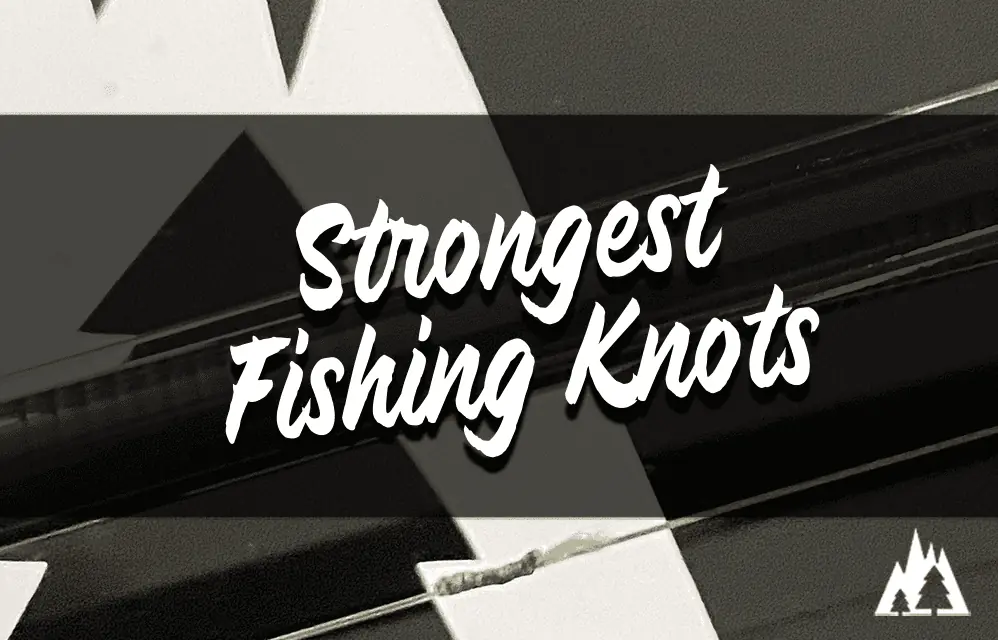What is the Strongest Fishing Knot?

Tournament Pro Brian Latimer said it best in one of his YouTube videos.
“I didn’t get into this sport to learn a bunch of knots. I got into this sport to catch fish.”
And I agree.
There’s no shortage of knot-tying videos out there; many of them have their own applications, depending on your type of fishing.
If you’re new to fishing, you might be a little overwhelmed by all the different knots one can use.
Don’t get me wrong, the knot you tie is extremely important. It will make a difference between a good day on the water and losing a ton of fish. Learning this is a very important skill set in fishing.
Growing up, one of the knots I learned was the improved clinch knot. It was a strong knot, and more importantly, it was a knot that I was confident in tying due to repetition.
As my skills and technique improved over the years, I had to learn other knots for different situations.
So what is the strongest fishing knot to use?
There are two types of knots that are mainly used for freshwater fishing:
- The knot that’s tied directly to the hook or lure.
- A connection knot that joins your main line to a leader.
The strongest knot isn’t necessarily the “prettiest” or easiest.
I’ll discuss which knots I mainly use for each type and alternatives that are easier and strong enough to handle most situations, and times when you shouldn’t use certain knots.
I believe these knots will get you through most rigs and knot-tying for most freshwater species like bass, trout, and other panfish.
Let’s dive in.
Strongest Knots For Tying Directly To Lure Or Hook
Double Uni Knot
You might have heard of this knot being used as a connection knot for two lines of similar diameter.
But did you know you can also use this knot (similar but different) for tying directly to your hook or lure?
Here’s a video tutorial:
When To Use This Knot:
Use this knot on jigs, crankbaits, or jerk baits when you know you’ll be throwing around thick cover.
You’ll need a knot that can strong to pull your way out of snags.
Although it’s a strong knot, it’s certainly not the thinnest.
You’ll know you tied it correctly when you see 3 tag ends after cutting the slack line.
An alternative knot that I love: The San Diego Jam Knot
I’ve been using the San Diego Jam Knot here and there, and I love how easy it is to tie when you’re out on the water. It’s a strong knot and smaller profile than the Double Uni.
Here’s the tutorial for the San Diego Jam Knot:
Line-To-Hook Knot For Braid
If you’re tying braided line to your hook or lure. I recommend using either the Palomar Knot or the Uni Knot.
Connection Knots That I Use and Trust
FG Knot
The FG Knot is one of the best connection knots when tying braid to mono or fluorocarbon line.
It takes some time to time to get it tied correctly, but it’s one of the strongest, thinnest knots you can tie.
I personally would only tie this knot the day before my trip if I could at home. It’s more tedious than the next knot I’ll recommend below (which I mostly use now).
One thing to note, the FG Knot works by the braid getting seated into the monofilament or fluorocarbon line. It’s basically digging into the line as it gets cinched down.
With that said, there are times when an FG Knot won’t be the best knot to use. If the diameter of your braid is larger than your leader’s diameter, I don’t suggest the FG Knot.
Below is the connection knot I use now.
The Improved Alberto Knot
This connection knot is much easier to tie than the FG Knot and very strong as well. The profile of the knot is slightly thicker, though, but it’s a compromise I was willing to accept for it being an easy knot to tie when you’re out on the water.
Tutorial On The Improved Alberto Knot:
Before You Go
Don’t forget to check out these resources that will make you a well-rounded angler!






